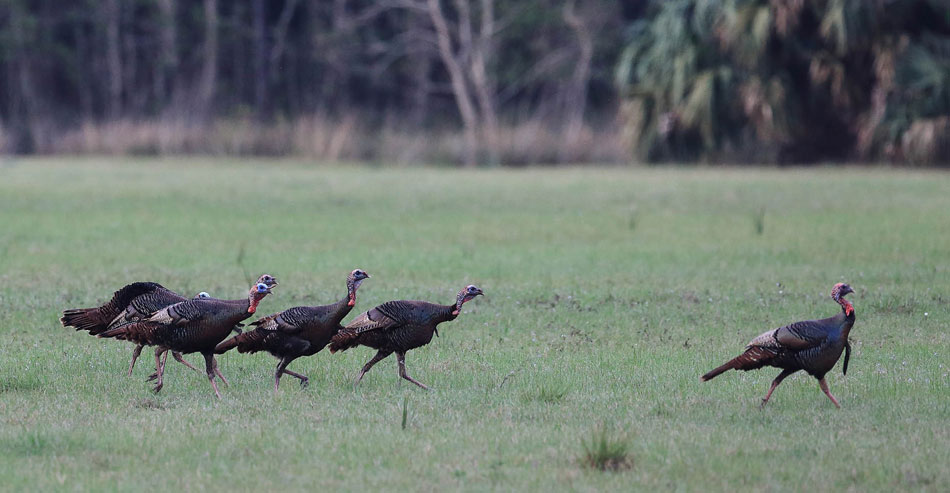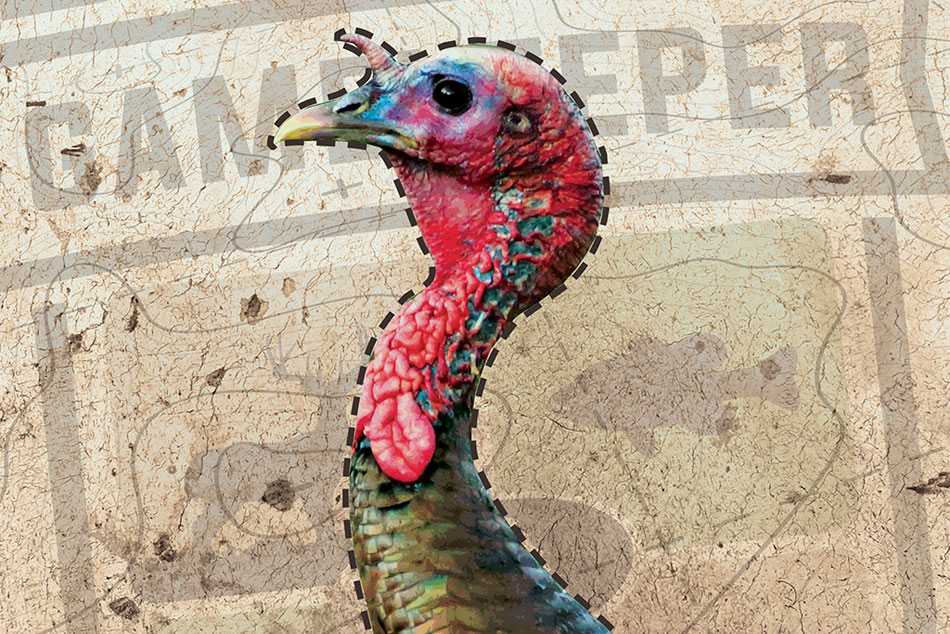David Owens from Acworth, Georgia, is the 2018 National Wild Turkey Federation (NWTF) Grand National Senior Open Division turkey-calling champion. In 2017, he completed an almost unbelievable feat by completing the U.S. Super Slam of wild turkeys, taking 49 gobblers in the 49 states with 90 percent of those birds harvested on public lands. Owens started hunting turkeys when he was 13 and has been hunting them for 20 years. He’s only been entering turkey-calling contests for six years. A Mossy Oak ProStaffer for four years, Owens prefers wearing Mossy Oak Bottomland for his early-season hunting and Mossy Oak Obsession for hunting late-season turkeys.
Dave Owens | Mossy Oak ProStaff

The season for Osceolas in Florida begins in early March where I’ll be hunting public land for nine days. Anyone can hunt turkeys on the public lands I hunt. Since I was in college, this is the way I've started my turkey season each year for the last decade.
Hunting public land the first week in Florida is fairly tough, but each year we go down there. We may define a successful hunt differently from what some turkey hunters consider successful. Regardless of whether we take a bird or not, we bring home great memoires, and we always have a good time trying to take turkeys.
After a week in Florida, we go to the opener in Alabama. Then we return home to Georgia and hunt Tennessee and then Kentucky. We’ll head to Washington, Idaho and Montana. Most seasons we usually hunt 10 to 12 different states.
One of the real secrets to hunting multiple states for different species of wild turkeys is the hunter’s ability to adapt to various conditions like terrain, weather and habitat. You’ve got to be willing to face turkey-hunting situations that you never may face if you hunt in your home state.
For instance, to take an Osceola gobbler on public land in Florida, you have to be willing to get away from the other hunters, and I'm still learning how to do that. Florida has huge expanses of public land to hunt, but much of it is choked with thick vegetation, palmetto flats and water everywhere. You can’t be afraid of getting wet. You have to look for small pockets of turkeys there. You have to scout before you hunt and search for habitat where turkeys can live and dodge hunters. Unlike many other places where you hunt turkeys, you can’t necessarily return to a place where you’ve taken or seen gobblers before and expect to find turkeys the next year, because the Osceola turkeys move a lot, depending on the water level in the areas where they live.
This year is supposed to be a really wet year for south Florida, so we’re expecting a lot of water. I don’t wear waders or hip boots to deal with the water in south Florida. Instead I wear Crocs. I know I'm going to get wet every day I hunt. So, I just go ahead and get wet first thing in the morning and then being wet doesn’t bother me. Crocs and pants dry quickly. If you wear hip boots, you’re going to spend more time trying to stay dry than you spend hunting. That’s a lesson I learned long ago when I first started hunting in Florida. Another factor that we just accept is that we’re going to get scratched by briars and cut by palmetto palms. That’s just part of the process of hunting down there.
I'm not afraid of snakes that we may see or mosquitoes. I carry a ThermaCell with me, and I highly recommend them if you're planning to hunt in south Florida. I also spray my clothes down with Sawyer’s Permethrin, and I let my clothes dry a day or two before I pack to go to Florida. Permethrin helps deter ticks.
Thick vegetation is another big challenge for hunting Osceolas in south Florida. When an Osceola gobbler hits the ground, we often have to get much closer to him to be able to hear him than you do when you're hunting other species of turkeys in other states. I've found that misjudging distance when you hear an Osceola turkey gobble often happens. The Osceola may sound like he's 200 yards away, when in reality, he only may be 100 yards away. When calling to these turkeys, always remember that less calling is better. Not only is less calling better, but the most important aspect for success in hunting the Osceola is picking a spot to call from to which the turkey will come. One of the advantages you have is that because the vegetation is usually so thick, you can often get really close to these birds before you start calling to them.
On public lands, the Osceola gobbler is probably hunted harder by more people than any other gobbler anywhere, because south Florida’s Osceola season is the first turkey season to open. Hunters come from all over the nation to try and take one of these birds. Besides the out-of-staters, quite a few local turkey hunters will be hunting on public lands in south Florida.
I’ve found that the Osceola gobbler is much more nervous than any other species of wild turkeys. Not only do they have hunter pressure, but they live in thick cover with big cats that can sneak up on them and attack in that thick vegetation. When that turkey opens his mouth and starts to gobble, he knows that something out there wants to eat him.



























